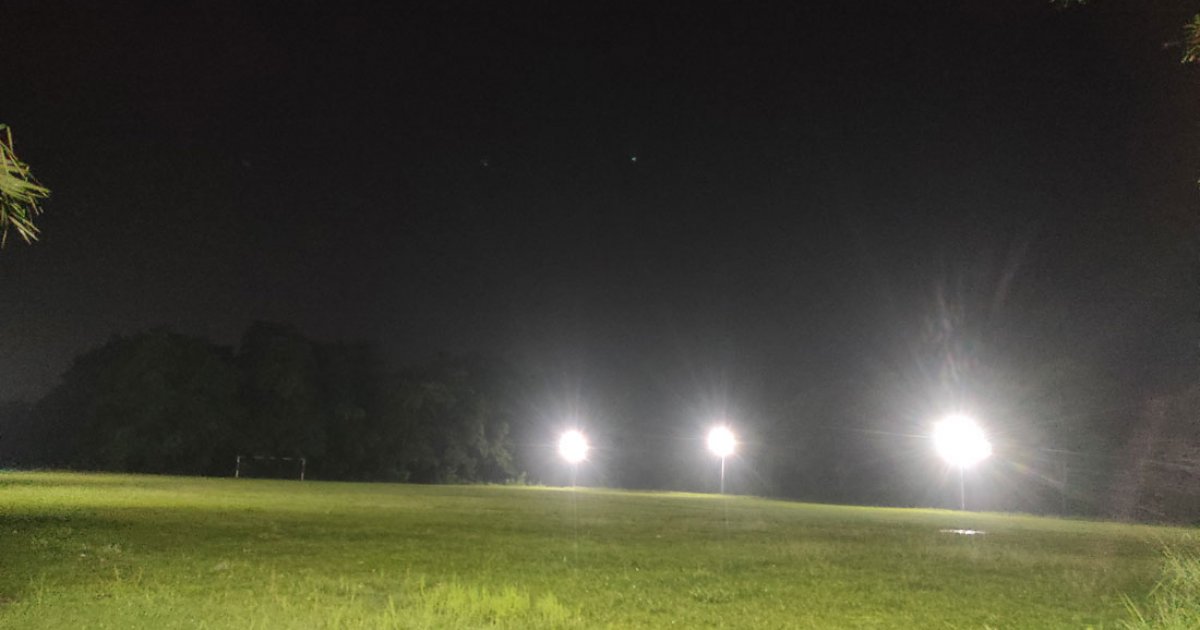Bright halogen and LED lights recently installed across the Jahangirnagar University (JU) campus are raising concerns among wildlife researchers and environmental experts.
While the administration says the initiative aims to strengthen security, the powerful lights — kept on from sunset to sunrise — are reportedly disrupting the natural behaviour of nocturnal wildlife and altering the campus’s night-time ecosystem.
According to the university’s engineering office, high-intensity 100- and 200-watt LED and halogen lights, each producing up to 1,600 lumens, have been installed around the central playground, JU School & College field, several campus roads, and residential hall areas. Several halls have also added more lighting on their own initiative.
Decline in nocturnal wildlife activity
Researchers from the Department of Zoology say such bright lighting is interfering with the natural activities of bats, owls, foxes and other nocturnal animals. Their ability to forage, move safely, and reproduce is being affected, and sightings have already decreased in areas like the Sydney Field, Central Field and nearby woodland patches.
Professor Md Kamrul Hasan of the Department of Zoology said: “Intense artificial light disrupts the sleep, feeding, and movement patterns of nocturnal animals. Many species are forced to leave their habitat when exposed to excessive illumination.”
Aritra Sattar, a student of Environmental Science, notes that the field near the 6th hall — once dense with bushes and frequented by birds such as Siberian Stonechat, Red-wattled Lapwing, Baya Weaver and Munia — has seen a dramatic decrease in bird presence.
“The renovation of the field and the excessive lighting have made these species disappear,” he said, adding that the imbalance could also affect owl and drongo populations.
Light pollution disturbs plant cycles
Excessive artificial lighting is also affecting plant physiology, experts warn.
Professor Dr Abdul Halim of the Department of Botany explained: “Plants need darkness as much as they need light. When bright lights remain on throughout the night, photosynthesis in leaves remains partially active. This causes stress, weakens the plant, and lowers its immunity.”
He added that prolonged exposure to artificial light disrupts seasonal flowering cycles, ultimately affecting fruit production — an impact that ripples across the food chain of birds and small animals.
Students demand eco-friendly lighting policy
Students say that using low-intensity lights or downward-facing fixtures in ecologically sensitive zones could reduce environmental harm without compromising security.
Amartya Roy, a student of JU’s 47th batch, said: “If safety is the goal, strengthening surveillance at the main entry points is more effective. Flooding fields and forested areas with bright lights is damaging the wildlife habitat.”
Experts also recommend ecological research, controlled lighting systems, and environment-friendly policies such as motion-sensor lights to protect both campus safety and biodiversity.
What the administration says?
Professor AKM Rashidul Alam, proctor of the university and teacher of environmental science, acknowledged the environmental drawbacks but said the lighting was necessary.
“It is true that bright lights affect nocturnal animals, but the university must prioritise preventing theft, mugging and drug abuse on campus,” he said.
Professor Sohel Ahmed, pro-VC (Administration), added: “The decision was taken for student safety. If we receive a written complaint regarding the harmful effects of artificial lighting, we will review the matter.”



